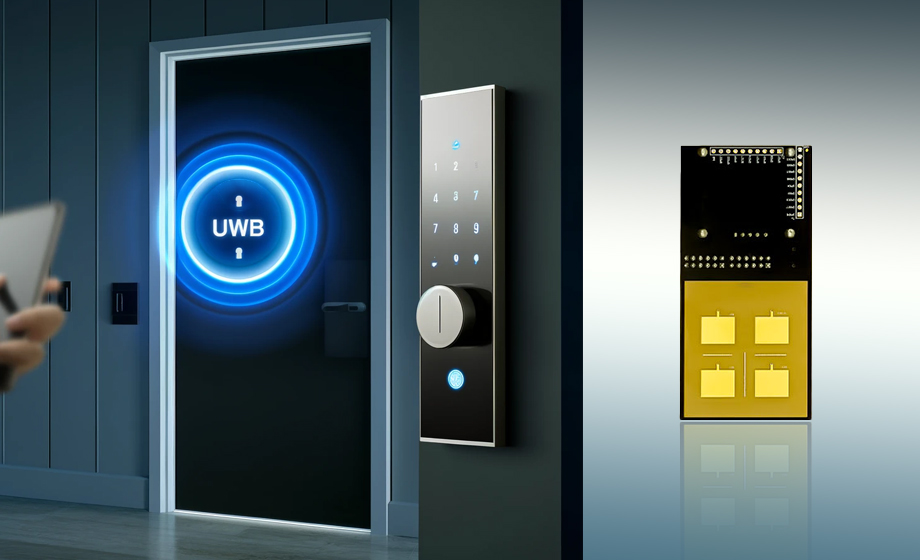I. Introduction
With the rapid development of science and technology, wireless communication technology has become an indispensable part of our lives. Among many wireless communication technologies, ultra-wideband (UWB) technology has gradually occupied an important position in the field of wireless communication with its advantages of high speed, low power consumption and high precision. Especially UWB positioning chip scheme, its excellent performance in ranging and positioning, so that it has a wide range of applications in many fields. This paper will deeply discuss the technical advantages, application scenarios and development trends of UWB 7nm ultra-wideband ranging chip.

Second, the advantages of UWB positioning chip scheme
High precision: UWB positioning technology with its nanosecond pulse signal transmission speed and extremely high time resolution, can achieve high precision ranging and positioning. Its accuracy can usually reach the level of centimeters or even millimeters.
Low power consumption: UWB technology uses ultra-wideband pulse signals, which have a very wide bandwidth and can transmit a large amount of data in a short period of time, thus achieving the need for low power consumption. This allows UWB devices to have longer standby time and smaller size.
Strong anti-interference ability: due to the special nature of UWB pulse signal, it can effectively avoid the interference of other wireless communication equipment, thus ensuring the stability of its communication.
High security: UWB technology has low power density requirements for the signal, so that it can be transmitted at low power, thus improving the security of communication.
3. Application scenarios of 7nm ultra-wideband chips
Indoor positioning: In complex indoor environments, the use of 7nm ultra-wideband chips for positioning can provide accurate positioning services to the centimeter level. This is very useful for navigation and finding services for large indoor places such as shopping malls, hospitals, underground parking lots.
Smart home: By integrating 7nm ultra-wideband chips into smart home devices, high-precision remote control and automation can be achieved. For example, adding a UWB chip to a smart speaker can achieve accurate voice control and position positioning.
Driverless: Adding 7nm ultra-wideband chips to driverless cars can obtain real-time environmental information around the car to provide accurate decision-making basis for autonomous driving.
Security monitoring: The placement of 7nm ultra-wideband chips in public places or important facilities can achieve accurate tracking and monitoring of people and items, and improve security prevention capabilities.
Industrial automation: In the field of industrial automation, 7nm ultra-wideband chips can be used for accurate material handling, equipment commissioning and production process control.
Fourth, development trends and challenges
Development trend
With the continuous progress of technology and the expansion of application scenarios, the UWB positioning chip scheme will develop in the direction of more accurate, more efficient and more reliable. First, as the process continues to progress, the size and power consumption of 7nm ultra-wideband chips will be further reduced, making it possible to implement applications on more devices. Secondly, by introducing more advanced signal processing technology and algorithm optimization, the accuracy of the UWB positioning chip will be further improved. With the popularity of new generation communication technologies such as 5G, UWB positioning chips will be better integrated into the environment such as the Internet of Things and cloud computing, bringing innovative applications to more industries.
Challenges faced
Although the UWB positioning chip scheme has many advantages, it also faces some challenges in practical applications. First of all, due to the broadband characteristics of UWB signals, their propagation distance is relatively short, especially in outdoor environments. Second, the cost of UWB devices is relatively high, which limits its application in some low-end markets and consumer sectors. In addition, the power consumption of UWB devices is relatively high compared to other wireless communication technologies, which also limits its application in some mobile devices and battery-powered devices. To address these issues, future research and development will need to further explore new technologies and protocols.
V. Conclusion
To sum up, the UWB 7nm ultra-wideband chip has wide application prospects in many fields due to its advantages of high precision, low power consumption, strong anti-interference ability and high security. Although there are still some challenges, but with the continuous progress of technology and the continuous expansion of application scenarios, I believe that these problems will gradually be solved. In the future, we can expect to see more innovative applications and excellent products emerge to bring more convenience and surprises to our lives.



